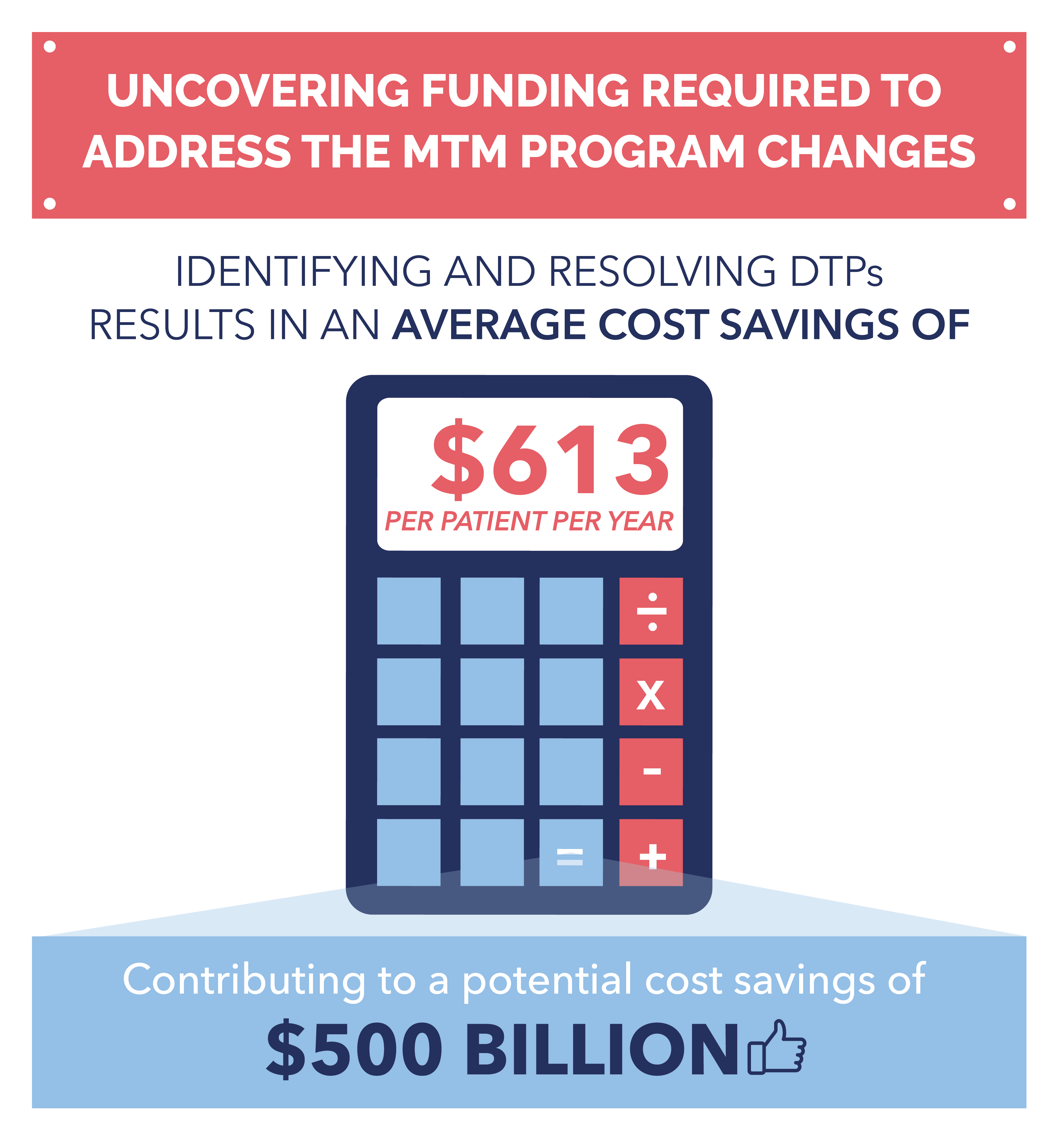Anticipatory drug therapy management (MTM) program changes of CMS will significantly increase the number of eligible Medicare beneficiaries who qualify to enroll in the program, creating a significant administrative burden on plans in terms of resources and funding. These new qualification parameters are expected to come into effect in measurement year 2025.

CMS expects its new MTM criteria to increase the number of eligible members from 4.5 million (9%) to 11 million (23%) and recognizes that the proposed changes will result in additional costs to the plan of approximately $336 million per year.
To address these challenges, Medicare Advantage Prescription Drug Plans (MAPDs) and Prescription Drug Plans (PDPs) will need to increase the budgeted expenses necessary to expand the MTM program accordingly. Therefore, plans will need to be strategic about how they interact with members about their medications and determine how best to fund an expanded MTM program.
With a focus on pharmacy-led medical cost reduction, plans can maximize the identification and resolution of drug therapy problems (DTPs) to enable pharmacists to improve the quality and efficiency of comprehensive patient reviews. medicines (CMR). This generates positive health outcomes and quantifiable medical cost savings, which can help finance (in whole or in part) the anticipated cost of program expansion.
What lies ahead for MAPD plans and PDPs with changes to the MTM program?
Starting in 2023, plans are able to set MTM eligibility parameters to include members who have up to 3 common chronic conditions, take up to 8 Part D medications, and meet the annual spending threshold of $4,935.
However, the updated guidelines are expected to significantly expand the number of people who should be considered for MTM services, which include CMRs and other medication management services provided by a qualified pharmacist, to avoid DTCs.
With the new program criteria, CMS plans to reduce the number of eligible drugs from 8 to 5 and lower the cost threshold to just $1,004 to bring it more in line with the average annual cost of 5 generic drugs in 2020. Plans will also need to assess members against a list of 10 common conditions and ensure that these newly eligible members receive a CMR that includes an “interactive consultation” conducted in real time, whether via synchronous telehealth or in person.
Four Strategies to Prepare for Expanded MTM Activities
The key to meeting the challenge of an expanded MTM program will be finding ways to deliver MTM services more efficiently and in ways that quickly generate savings. Expanding existing resources and preserving others helps meet future medication management needs. If done correctly, expanding the reach of MTM resources and generating new forms of value should make MTM self-sustaining while contributing to higher ratings, which come with their own attractive financial and marketing rewards.
Plans that want to succeed with MTM should begin evaluating their technical infrastructure, staff training, and member engagement strategies to ensure they have the appropriate tools to effectively scale their efforts.
1. Support pharmacy workflows with technology to maximize cost reduction
Clinician-member relationships are at the heart of the success of any member engagement initiative, including MTM. With access to abundant data on member health status, prescriptions, and behaviors, outreach staff are able to elevate the quality and effectiveness of CMR.

A platform that frequently (daily or weekly) leverages medical and pharmacy claims helps the health plan identify the broadest possible set of DTCs within the MTM eligible member population, in order to guide the pharmacist to CMR most clinically effective. By combining medical claims data with pharmacy data, the plan can identify DTCs based on primary adherence, where ICD-10 diagnosis codes do not have correlated pharmacy claims. The availability of this real-time data allows a pharmacist to access a broader set of DTCs during CMR, to further improve health outcomes and reduce medical costs.
The real-time analytics available through the platform during a CMR also help the pharmacist capture additional information that can lead to highly effective engagement. For example, the availability of J codes (also found in medical claims) may indicate the use of expensive specialty drugs and the possibility of switching to an alternative drug or less expensive administration site – additional savings opportunities for patients and plans. .
The real-time analytics available through the platform during a CMR also help the pharmacist capture additional information that can lead to highly effective engagement. For example, the availability of J codes (also found in medical claims) may indicate the use of expensive specialty drugs and the possibility of switching to an alternative drug or less expensive administration site – additional savings opportunities for patients and plans. .
2. Evaluate current infrastructure and explore scalability options
To meet expectations, MAPD plans and PDPs will need a technology platform capable of performing the advanced analytics needed to stratify populations by risk, track awareness and engagement, and return actionable performance insights of the program, all on a scale they have never had to deal with. Before.
Plans should carefully review their existing tools for scalability and flexibility, particularly as they relate to their use by health plan clinicians and in-network pharmacies. For example, executives may want to consider MTM partners that offer software-as-a-service options that can support incremental expansion and capacity fluctuations that may occur throughout the year.
3. Identify current and future member eligibility
Health plans should be able to proactively identify members eligible for MTM under the new guidelines. Even more useful is the ability to predict when members are likely to become eligible in the near future, to help the plan prepare for enrollment in MTM services.
If and when CMS finalizes the new MTM rules, the tools and partners that allow a health plan to accurately identify the number of potential newly eligible members can also help the plan forecast expected growth in MTM program costs.
4. Monitor the program for continued effectiveness and cost reduction opportunities
MTM’s goal is to reduce downstream expenses by reducing avoidable use and driving better member outcomes. But since plans can’t manage what they can’t measure, they must be able to see, almost in real time, how well their efforts are helping to achieve that goal.
Leaders should consider adopting tools that provide access to detailed, customizable dashboards to gain in-depth insights into emerging issue identification, member outreach patterns, MTM activity success, and evidence-based evidence on claims for cost savings resulting from DTP resolutions and other interventions.
Access to this information allows plans to understand where to focus their efforts to maximize cost savings that can be put back into the MTM program or used elsewhere to fund other essential member services.
By taking a structured, data-driven approach to optimizing, executing and monitoring the new MTM landscape, MAPD plans and PDPs can respond to proposed program criteria changes, realizing savings that can help fund program expansion , support higher overall ratings, and continue to provide equitable, high-quality services to members with multiple medications and conditions.
